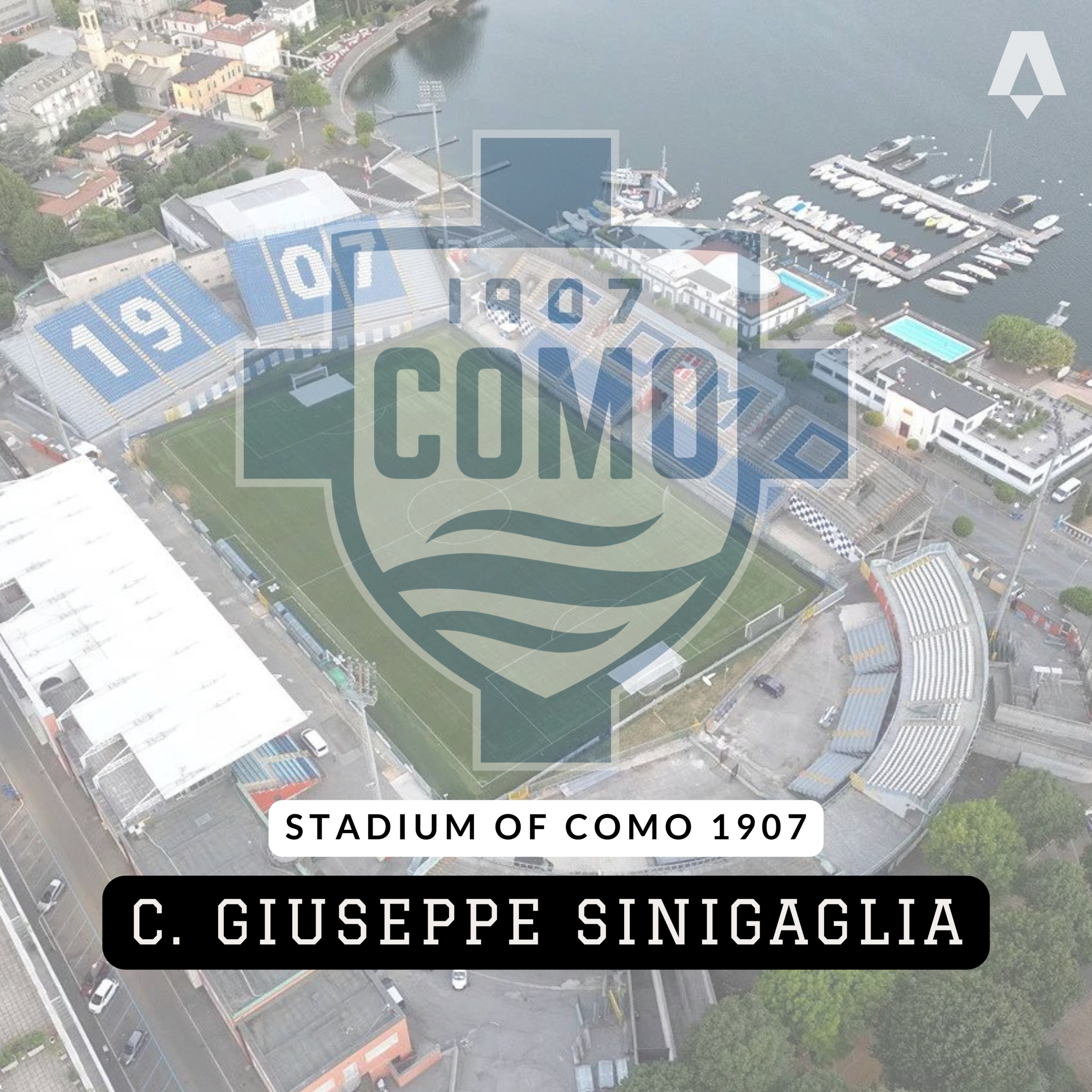Name: Stadio Giuseppe Sinigaglia
City: Como
Region: Lombardy
Address:
Coordinates:
- Latitude: 45°48′50″N
- Longitude: 9°4′20″E
Build: 30 June 1927
Renovations: –
Capacity: 13,602
Pitch Size: 105 m x 68 m
Home teams in Serie A: Calcio Como
UEFA Category: –
Owner: Municipality of Como
Interesting Fact:
Another old stadium with a rich history, the Stadio Giuseppe Sinigaglia was built on the precise will of Benito Mussolini and completed in 1927. It was later named after the war hero who was a native of Como – Giuseppe Sinigaglia.
Key Features and History:
The stadium was inaugurated on July 30, 1927. Its opening was attended by prominent figures, including Benito Mussolini, reflecting its historical significance at the time. Capacity: The stadium has a modest seating capacity of around 13,602 spectators.
Though small in size compared to major Italian football venues, its lakeside location and picturesque setting give it a unique charm. Location: Stadio Giuseppe Sinigaglia is situated right on the shores of Lake Como, providing one of the most scenic backdrops for a football stadium in Europe. Its location makes it a key landmark in the city and part of the local identity. Architecture and Design: The stadium was originally designed by Giovanni Greppi, an Italian architect known for his rationalist style.
The design of the stadium fits into the aesthetics of early 20th-century Italian architecture, with a focus on functionalism. Over the years, there have been several updates to the structure, but much of its original character remains intact. Other Uses: While primarily a football stadium, Stadio Giuseppe Sinigaglia is also part of the multi-sport complex that includes facilities for athletics and rowing, reflecting Como’s rich sporting culture. Rowing is especially significant due to the stadium’s namesake, Giuseppe Sinigaglia, who was a champion rower.
Over the years, the stadium has undergone various renovations to maintain safety standards and improve the fan experience. Recent upgrades have focused on modernizing facilities, improving seating, and enhancing the overall stadium experience, especially as Como 1907 has sought to climb back up the Italian football pyramid.
The naming of the stadium after Giuseppe Sinigaglia adds a layer of local pride and history to the venue. Sinigaglia was not only a successful sportsman but also a decorated soldier who gave his life during World War I, making him a revered figure in Como. The stadium stands as a tribute to his legacy.
One of the defining features of Stadio Giuseppe Sinigaglia is its breathtaking location next to Lake Como, with views of the surrounding mountains. This makes it one of the most picturesque football venues in Italy. The scenic beauty adds to the matchday atmosphere, providing a unique experience for both players and spectators.
Stadio Giuseppe Sinigaglia is more than just a football stadium; it’s a symbol of Como’s community and sports culture. It has hosted many important matches for Como 1907, including their periods in Serie A during the 1980s and early 2000s. The stadium also reflects the resilience of the club, which has faced financial difficulties and relegations but remains a cornerstone of the city’s sporting life. In conclusion, Stadio Giuseppe Sinigaglia is a historic and scenic football venue that represents both the local sporting heritage of Como and the memory of a beloved local hero. Its lakeside location and intimate size make it one of Italy’s most unique stadiums.


